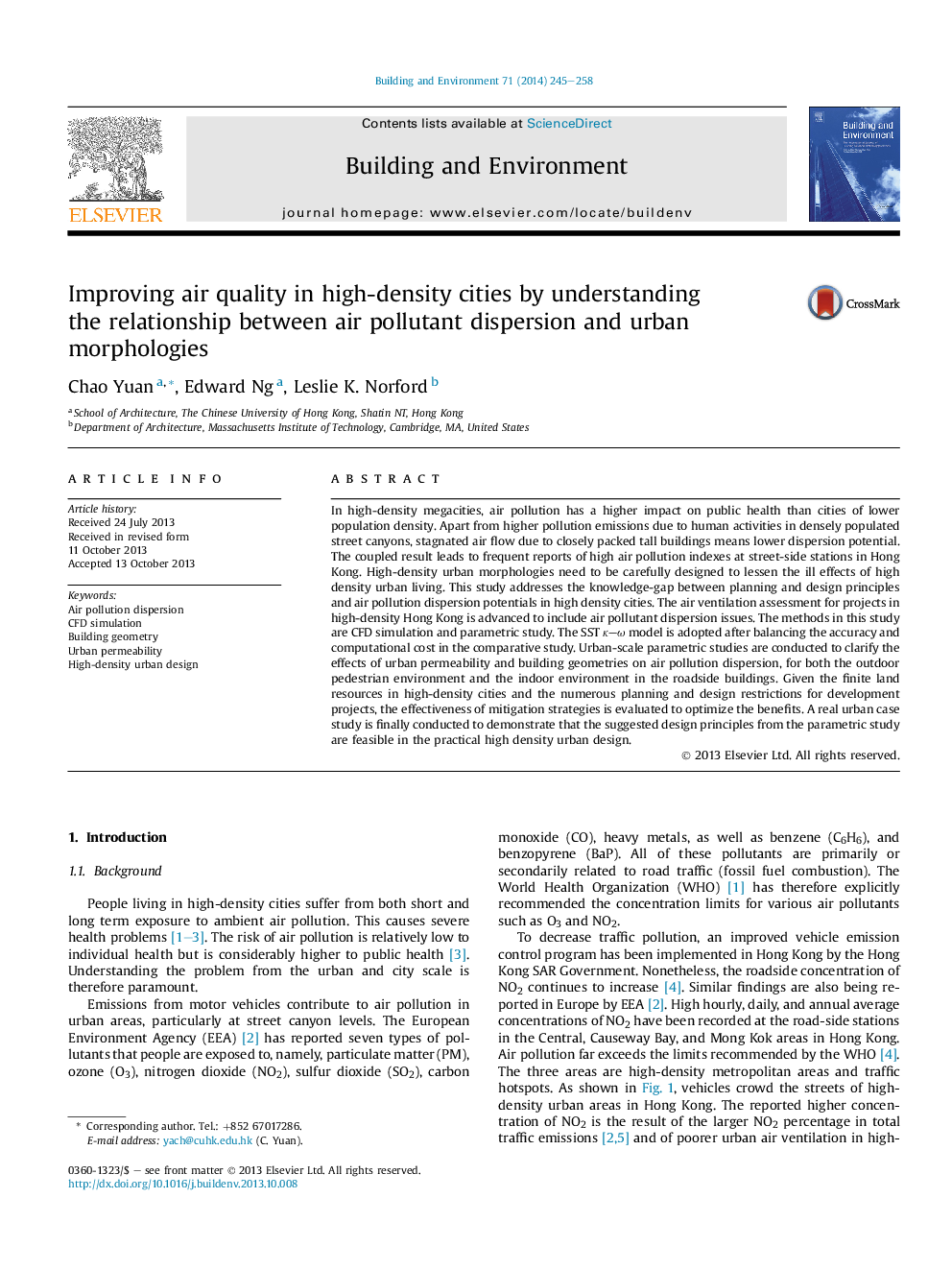| کد مقاله | کد نشریه | سال انتشار | مقاله انگلیسی | نسخه تمام متن |
|---|---|---|---|---|
| 248254 | 502555 | 2014 | 14 صفحه PDF | دانلود رایگان |
• The study clarifies the air pollutant dispersion mechanism in high-density cities.
• The study addresses the urban traffic pollutant problems and provides the solutions.
• The study relies on a parametric study that tests the performance of design options.
• The study validates LES and RANS models using wind tunnel data.
• The study provides understandings to map the pollutant dispersion in the urban areas.
In high-density megacities, air pollution has a higher impact on public health than cities of lower population density. Apart from higher pollution emissions due to human activities in densely populated street canyons, stagnated air flow due to closely packed tall buildings means lower dispersion potential. The coupled result leads to frequent reports of high air pollution indexes at street-side stations in Hong Kong. High-density urban morphologies need to be carefully designed to lessen the ill effects of high density urban living. This study addresses the knowledge-gap between planning and design principles and air pollution dispersion potentials in high density cities. The air ventilation assessment for projects in high-density Hong Kong is advanced to include air pollutant dispersion issues. The methods in this study are CFD simulation and parametric study. The SST κ–ω model is adopted after balancing the accuracy and computational cost in the comparative study. Urban-scale parametric studies are conducted to clarify the effects of urban permeability and building geometries on air pollution dispersion, for both the outdoor pedestrian environment and the indoor environment in the roadside buildings. Given the finite land resources in high-density cities and the numerous planning and design restrictions for development projects, the effectiveness of mitigation strategies is evaluated to optimize the benefits. A real urban case study is finally conducted to demonstrate that the suggested design principles from the parametric study are feasible in the practical high density urban design.
Journal: Building and Environment - Volume 71, January 2014, Pages 245–258
